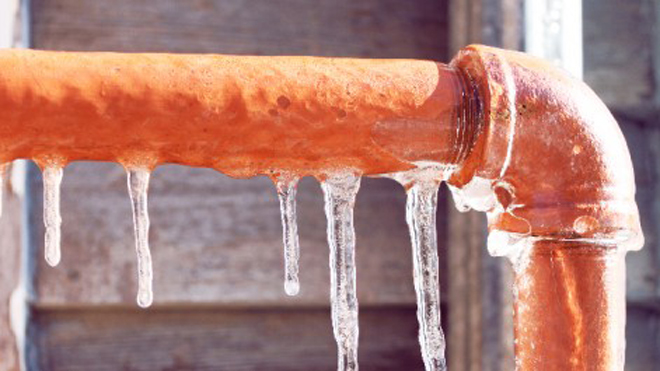Ways to Protect Pipes from Cold Weather Issues: Essential Advice
Ways to Protect Pipes from Cold Weather Issues: Essential Advice
Blog Article
This article on the next paragraphs on the subject of Helpful Tips to Prevent Frozen Pipes this Winter is quite compelling. Check it out for yourself and figure out what you think about it.

Winter can wreak havoc on your pipes, specifically by freezing pipelines. Below's how to avoid it from taking place and what to do if it does.
Introduction
As temperature levels decline, the risk of icy pipelines rises, potentially resulting in expensive fixings and water damage. Understanding how to prevent frozen pipelines is important for property owners in chilly climates.
Comprehending Icy Pipelines
What triggers pipelines to freeze?
Pipelines ice up when subjected to temperature levels below 32 ° F (0 ° C) for prolonged periods. As water inside the pipelines freezes, it increases, taxing the pipeline wall surfaces and possibly causing them to rupture.
Dangers and damages
Frozen pipes can result in water interruptions, building damages, and pricey fixings. Burst pipelines can flooding homes and trigger substantial architectural damage.
Indications of Frozen Pipeline
Identifying icy pipes early can prevent them from rupturing.
Exactly how to determine icy pipes
Try to find decreased water circulation from faucets, uncommon smells or sounds from pipelines, and visible frost on revealed pipelines.
Prevention Tips
Shielding vulnerable pipelines
Cover pipes in insulation sleeves or use heat tape to shield them from freezing temperatures. Concentrate on pipelines in unheated or external areas of the home.
Home heating strategies
Maintain interior spaces sufficiently heated, particularly areas with pipes. Open cupboard doors to permit warm air to circulate around pipes under sinks.
Safeguarding Outdoor Pipes
Garden tubes and outdoor taps
Separate and drain pipes yard tubes before winter. Mount frost-proof spigots or cover outside taps with protected caps.
What to Do If Your Pipes Freeze
Immediate actions to take
If you believe icy pipelines, maintain taps open up to relieve stress as the ice melts. Use a hairdryer or towels taken in warm water to thaw pipes slowly.
Long-Term Solutions
Structural adjustments
Consider rerouting pipelines away from outside walls or unheated areas. Add extra insulation to attics, basements, and crawl spaces.
Upgrading insulation
Buy premium insulation for pipes, attics, and wall surfaces. Correct insulation assists maintain regular temperatures and reduces the threat of icy pipes.
Verdict
Protecting against frozen pipes requires positive measures and fast reactions. By recognizing the causes, indications, and safety nets, property owners can shield their plumbing during winter.
5 Ways to Prevent Frozen Pipes
Drain Outdoor Faucets and Disconnect Hoses
First, close the shut-off valve that controls the flow of water in the pipe to your outdoor faucet. Then, head outside to disconnect and drain your hose and open the outdoor faucet to allow the water to completely drain out of the line. Turn off the faucet when done. Finally, head back to the shut-off valve and drain the remaining water inside the pipe into a bucket or container. Additionally, if you have a home irrigation system, you should consider hiring an expert to clear the system of water each year.
Insulate Pipes
One of the best and most cost-effective methods for preventing frozen water pipes is to wrap your pipes with insulation. This is especially important for areas in your home that aren’t exposed to heat, such as an attic. We suggest using foam sleeves, which can typically be found at your local hardware store.
Keep Heat Running at 65
Your pipes are located inside your walls, and the temperature there is much colder than the rest of the house. To prevent your pipes from freezing, The Insurance Information Institute suggests that you keep your home heated to at least 65 degrees, even when traveling. You may want to invest in smart devices that can keep an eye on the temperature in your home while you’re away.
Leave Water Dripping
Moving water — even a small trickle — can prevent ice from forming inside your pipes. When freezing temps are imminent, start a drip of water from all faucets that serve exposed pipes. Leaving a few faucets running will also help relieve pressure inside the pipes and help prevent a rupture if the water inside freezes.
Open Cupboard Doors
Warm your kitchen and bathroom pipes by opening cupboards and vanities. You should also leave your interior doors ajar to help warm air circulate evenly throughout your home.

I'm certainly very involved in Helpful Tips to Prevent Frozen Pipes this Winter and I am hoping you enjoyed my blog post. Do you know about anybody else who is inquisitive about the niche? Why not promote it. Kudos for your time. Don't forget to stop by our website back soon.
Schedule A Service Report this page